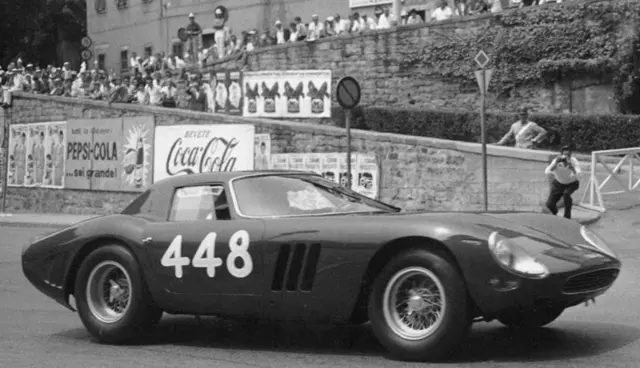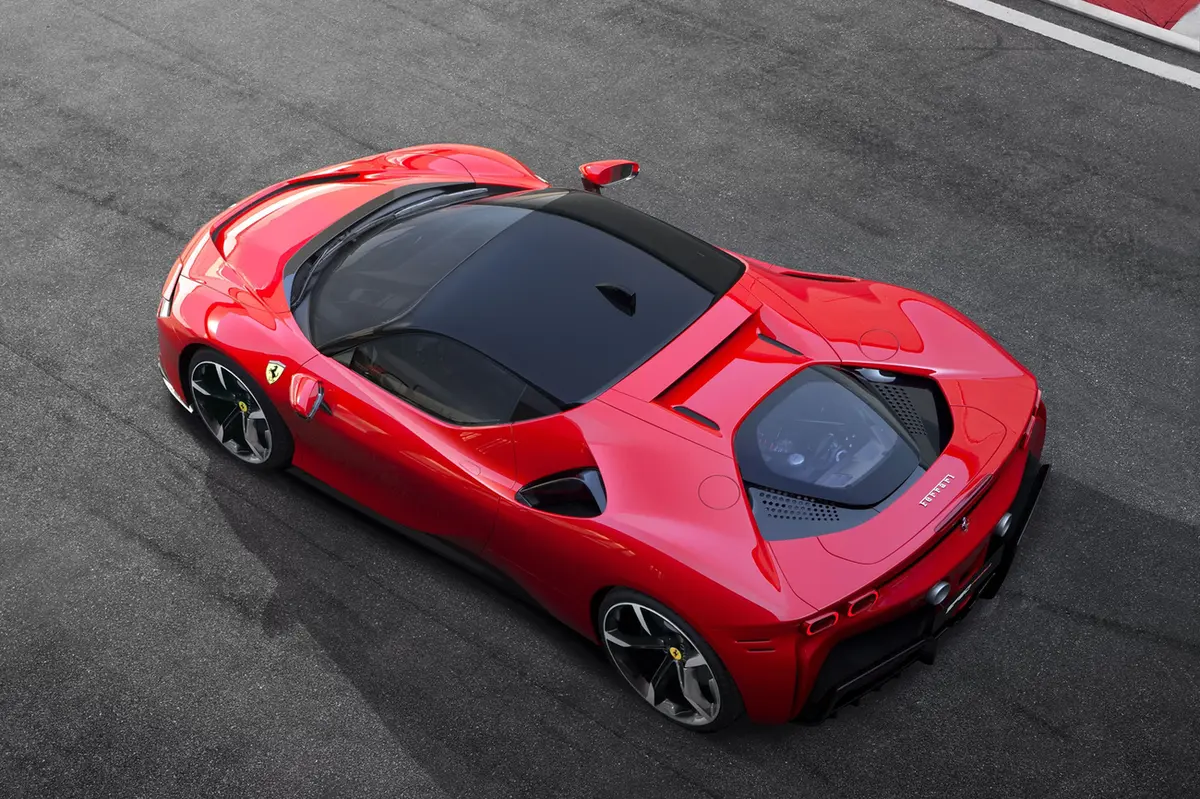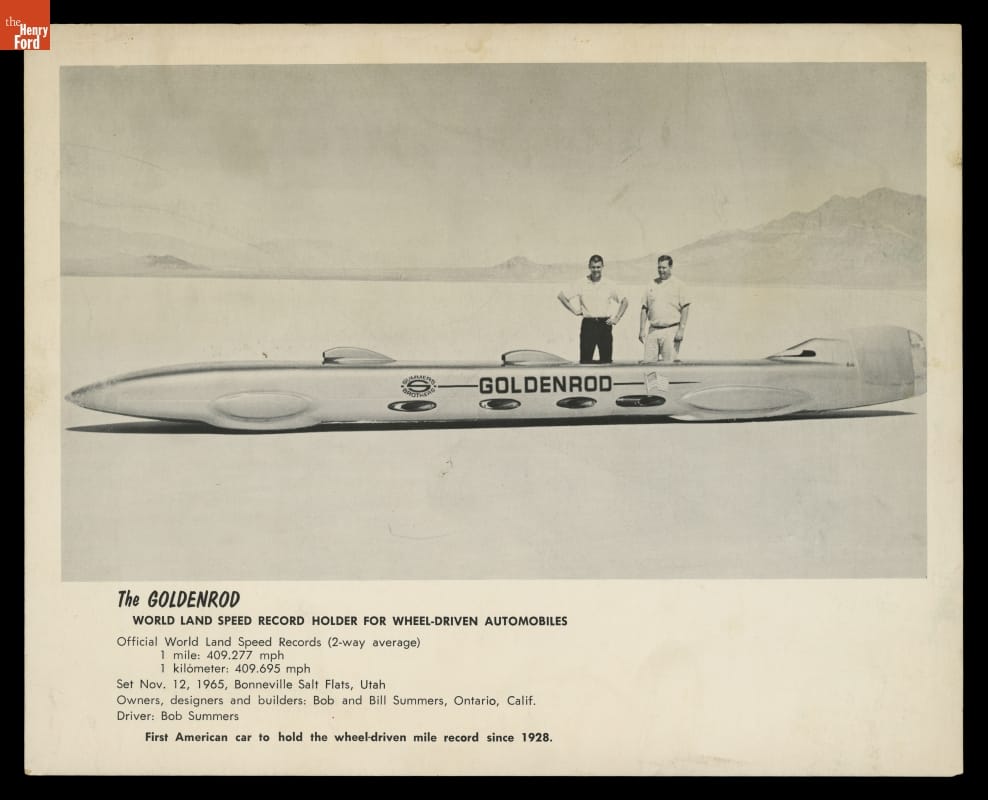About JC Whitney Editorial Team

Meet the JC Whitney Editorial Team, your go-to experts for automotive insights, from in-depth car culture articles to the latest in vehicle tech.
More from JC Whitney Editorial TeamFerrari’s impact on the automotive industry transcends its role as a manufacturer of some of the world’s most coveted sports cars; it represents a benchmark of excellence, innovation, and performance. Since its inception in 1947, Ferrari has been synonymous with racing success, pioneering engineering, and unparalleled design aesthetics, setting standards that others strive to meet. Ferrari’s foray into the use of V12 engines, mid-engine configurations, and advanced aerodynamics has not only propelled its vehicles to numerous victories on the race track but has also influenced the development of sports and luxury cars across the industry. The brand’s commitment to technological advancement, as seen in models like the LaFerrari with its hybrid powertrain, showcases Ferrari’s role in pushing the boundaries of what is possible in automotive engineering, blending performance with sustainability.
Moreover, Ferrari’s philosophy of combining cutting-edge technology with artisanal craftsmanship has elevated the brand to a symbol of luxury and exclusivity, influencing consumer expectations and the marketing strategies of luxury car manufacturers worldwide. The iconic Prancing Horse emblem embodies a legacy of passion, excellence, and the relentless pursuit of perfection, inspiring a culture of innovation and competition that drives the entire automotive sector forward. Through its racing heritage, innovative road cars, and influential design language, Ferrari has indelibly shaped the automotive landscape, embodying the spirit of competition and the pursuit of engineering perfection.
Ferrari 125 S (1947)

The Ferrari 125 S represents the genesis of the Ferrari legend, marking the inception of what would become one of the most iconic and revered automobile brands in the world. Unveiled in 1947, it was the very first car to bear the Ferrari name, a brainchild of Enzo Ferrari, whose vision was to create a car that embodied supreme performance and unparalleled racing prowess. The 125 S was a testament to this vision, powered by a 1.5-liter V12 engine, a marvel of engineering at the time, designed by the legendary Gioachino Colombo. This engine, capable of producing 118 horsepower, was noteworthy for its high-revving capabilities and distinctive sound, setting the stage for Ferrari’s long-standing tradition of V12 engines. The car’s debut on the racetracks was as dramatic as its creation, claiming victory in its first ever race at the Rome Grand Prix, driven by Franco Cortese. This initial success was not just a win on the track; it symbolized the birth of the Ferrari racing dynasty, laying the foundation for a legacy of dominance in motorsport. With its tubular chassis and simple yet functional design, the 125 S was not just a car; it was a statement of intent, showcasing Ferrari’s commitment to excellence, a philosophy that continues to drive the brand today.
Ferrari 250 GTO (1962-1964)

The Ferrari 250 GTO, crafted between 1962 and 1964, stands as a monumental figure in the pantheon of automotive excellence, embodying the pinnacle of design, performance, and racing success of its era. This masterpiece was engineered under the watchful eye of Giotto Bizzarrini and later refined by Mauro Forghieri, with a stunning body shaped by Sergio Scaglietti that epitomized the aesthetics of speed and aerodynamic efficiency. At the heart of the 250 GTO beats a 3.0-liter V12 engine, a symphony of power and reliability, propelling it to dominate international motorsports, including claiming the World Manufacturer’s Championship three times consecutively. Beyond its competitive prowess, the 250 GTO became an icon of automotive artistry and engineering, renowned for its exhilarating performance, with a top speed of over 170 mph and handling characteristics that were both fierce and forgiving. Limited to just 36 units, its rarity and historical significance have elevated the 250 GTO to the echelons of the most coveted and valuable collector cars in existence, fetching record-breaking sums at auctions. The 250 GTO is not merely a car but a testament to Ferrari’s enduring legacy, a symbol of the golden age of racing, and a benchmark of luxury and prestige that has captivated enthusiasts and collectors around the globe.
Ferrari Dino 246 GT (1969-1974)

The Ferrari Dino 246 GT, produced from 1969 to 1974, marks a pivotal chapter in Ferrari’s storied history, embodying a departure from the marque’s traditional V12 heritage in favor of a more compact and accessible sports car. Named in honor of Enzo Ferrari’s late son, Alfredo “Dino” Ferrari, the Dino 246 GT was powered by a 2.4-liter V6 engine, a decision that underscored Ferrari’s commitment to innovation and performance in a more compact package. This mid-engined marvel, designed by the legendary Pininfarina, boasted a sleek, flowing body that not only enhanced its aesthetic appeal but also its aerodynamic efficiency, setting a new standard for sports car design. The Dino 246 GT’s performance was equally impressive, with its engine producing 195 horsepower, enabling a top speed of over 146 mph and a 0-60 mph acceleration time of just 5.5 seconds. Beyond its technical specifications, the Dino 246 GT represented a more accessible Ferrari, appealing to a broader audience and introducing the thrill of Ferrari ownership to a new generation. Its blend of beauty, performance, and relative affordability helped solidify Ferrari’s reputation not just as a manufacturer of superlative racing machines but as a creator of beautiful, road-going sports cars that were as enjoyable to drive as they were to behold.
Ferrari 288 GTO (1984-1987)

The Ferrari 288 GTO, introduced in 1984, is an emblematic figure in the pantheon of automotive legends, representing Ferrari’s ambitious foray into the realm of supercars. Designed with the intention of participating in Group B rally racing, the 288 GTO never saw competitive action due to the series’ cancellation, yet it transcended its original purpose to become a beacon of engineering excellence and design prowess. At its heart lay a revolutionary 2.8-liter twin-turbocharged V8 engine, a powerplant that marked Ferrari’s first significant embrace of turbocharging technology, delivering a staggering 400 horsepower. This engine was not just a marvel of power; it was a symphony of innovation that propelled the 288 GTO to over 189 mph, making it one of the fastest road cars of its time. The vehicle’s lightweight construction, featuring extensive use of composite materials, and its aerodynamically efficient bodywork, designed by the renowned Pininfarina, contributed to its exceptional performance and handling characteristics. The 288 GTO’s rarity, with only 272 units produced, combined with its groundbreaking achievements, has cemented its status as a collector’s dream. It was more than a car; it was a statement of Ferrari’s relentless pursuit of perfection, blending speed, style, and technological innovation to forge a timeless icon that laid the groundwork for future supercar marvels like the F40 and beyond.
Ferrari F40 (1987-1992)
The Ferrari F40, unveiled in 1987 to commemorate Ferrari’s 40th anniversary, stands as one of the most iconic supercars ever produced, a symbol of automotive purity and the epitome of Ferrari’s engineering might during the late 20th century. Conceived by Enzo Ferrari, it was the last Ferrari model he personally approved, making it a poignant legacy of his visionary leadership. The F40 was engineered with an unrelenting focus on performance and speed, powered by a formidable 2.9-liter twin-turbocharged V8 engine that delivered an awe-inspiring 471 horsepower. This powerplant enabled the F40 to shatter expectations, achieving a top speed of 201 mph, making it the first production car to break the 200 mph barrier, and cementing its place in automotive history. Its design was equally groundbreaking, featuring a lightweight, aerodynamically optimized body made of composite materials, and a spartan interior that eschewed luxury in favor of racing functionality. The F40’s raw performance, coupled with its striking, aggressive styling, captured the imagination of car enthusiasts worldwide, embodying the ultimate expression of speed and performance. With a limited production run, the F40 has not only become a highly sought-after collector’s item but also a lasting tribute to Ferrari’s passion for speed, innovation, and the pursuit of automotive perfection.
Ferrari 458 Italia (2009-2015)
The Ferrari 458 Italia, introduced in 2009, marked a significant evolution in the lineage of Ferrari’s mid-engined sports cars, blending cutting-edge technology, breathtaking design, and unparalleled performance. It succeeded the F430 and brought a slew of innovations and improvements, setting new standards for the sports car segment. Powered by a naturally aspirated 4.5-liter V8 engine, the 458 Italia boasted an impressive 562 horsepower, enabling it to sprint from 0 to 60 mph in under 3.4 seconds and reach a top speed of over 210 mph. This engine was not just about raw power; it was a masterpiece of engineering that delivered a thrilling soundtrack and exceptional responsiveness, encapsulating Ferrari’s racing heritage and expertise in a road car.
The design of the 458 Italia, crafted by Pininfarina, was both aesthetically striking and aerodynamically efficient, featuring sleek lines and advanced aerodynamic solutions that ensured stability and performance at high speeds. The interior of the 458 Italia was a fusion of luxury and functionality, with a driver-focused cockpit that integrated state-of-the-art technology and craftsmanship. The 458 Italia was also notable for its handling, offering a driving experience that was both exhilarating and accessible, thanks to sophisticated electronic controls and a finely tuned suspension system. Its blend of performance, design, and driving dynamics made the 458 Italia a quintessential Ferrari, embodying the brand’s passion for speed and innovation.
Ferrari LaFerrari (2013-2018)
The Ferrari LaFerrari, unveiled in 2013, emerged as the pinnacle of Ferrari’s engineering prowess and a bold foray into the hypercar territory, representing the brand’s first-ever hybrid vehicle. As the successor to Ferrari’s lineage of special limited-series cars, the LaFerrari was designed to be the definitive expression of the company’s capabilities in both technology and performance, blending a 6.3-liter V12 engine with a HY-KERS electric motor to produce a combined output of 949 horsepower and more than 900 Nm of torque. This powertrain enabled the LaFerrari to achieve astonishing performance figures, accelerating from 0 to 100 km/h (62 mph) in less than 3 seconds, and reaching a top speed of over 350 km/h (217 mph), making it one of the fastest cars in the world at its debut.
The LaFerrari’s design is equally groundbreaking, showcasing a futuristic and aerodynamically efficient silhouette that integrates active aerodynamics to provide unprecedented levels of downforce without compromising its sleek form. The interior of the LaFerrari reflects a seamless blend of innovation and luxury, with a focus on ergonomics and using high-quality materials to enhance the driving experience. Limited to just 499 units, the LaFerrari is not just a car but a masterpiece of automotive art, symbolizing the very essence of the Ferrari brand: an unyielding pursuit of performance, innovation, and exclusivity. It stands as a testament to Ferrari’s commitment to pushing the boundaries of what is possible, serving as a benchmark for future generations of supercars.



